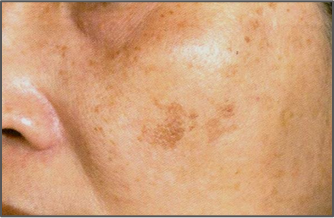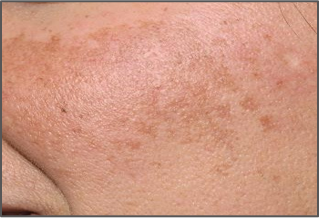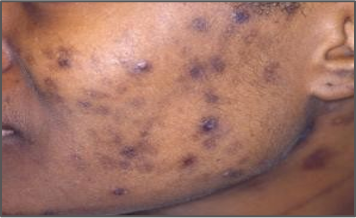We often get the question: "What is the most effective way to treat hyperpigmentation?" Well - the answer it not that simple, because what skin condition are you referring to? And can it be treated at all?

Several different skin conditions
Hyperpigmentation a term that covers several different skin conditions that all originate from the stem cell; the melanocyte, the pigment cell.
To be able to distinguish the various pigment-related problems and to a very high degree to be able to put together the correct treatment program, requires an in-depth understanding of the skin's physiology and the various causes behind it.
Cure the cause or reduce the symptom?
The most important thing is to aknowledge that we can't cure the cause, we can only reduce the symptom.
Each type of pigment change is due to a DNA change in the pigment cell, ie something we can not affect cosmetically and which to varying degrees can be a permanent mutation or a condition that takes off from within.
The three types of pigment changes we often meet:
1. Age-Spots or Sun-spots

The demarcated minor dark spots on the face, chest and hand we call sun spots, age spots or liver spost.
They can relatively easily be treated with different approaches in laser, light, brightening and smoothing skin care, including AHA as glycolic acid and other types of fruit acid.
The cure is also preventable, by reducing the amount of sunlight to which the skin is exposed.
2. Melasma/Chloasma

The larger cohesive patches seen especially with women on the forehead, on the cheeks and upper lip.
Melasma is the difficult one, which can not be treated with high concentrations of deep AHA, as this will trigger the inflammation, that is already underlying the problem. A more gentle approach is recommended.
3 Post inflammatory hyperpigmentation
The pigmentation that is caused by scarring after acne, wounds and surgeries.
May very well lie in the dermis where the scar originated from, but will most often be possible to improve with topical treatments.
Now you know a bit more about the 3 types. If you want to become a specialist in diagnosing Hyperpigmentation and learn more about if and how they can be treated, then sign up for our free online webinar here

